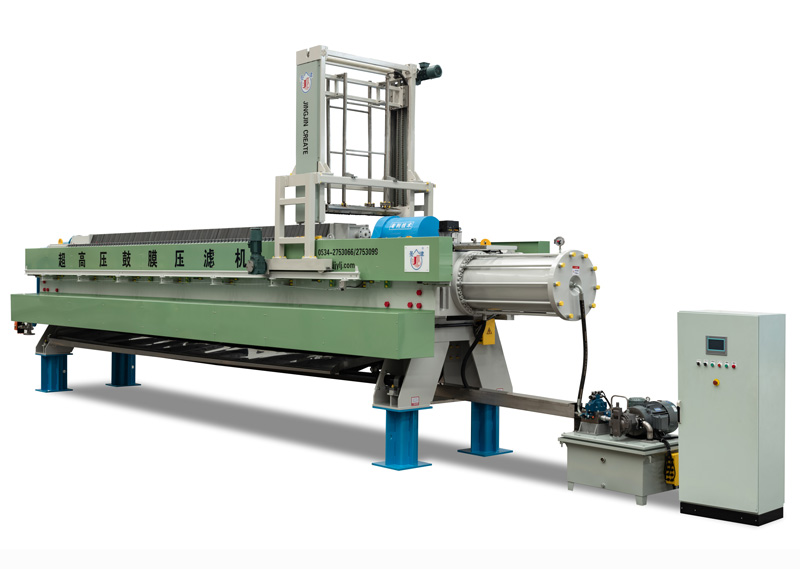Filter presses are essential systems used in wastewater treatment plants and industrial facilities that produce large amounts of sludge and wastewater. Sludge filter press and wastewater filter presses work by mechanically squeezing liquid out of sludge or wastewater, reducing volume and allowing for easier disposal or processing.
How Sludge Filter Presses Work?

Sludge filter presses use a series of filter plates or plates and frames that alternate with filter cloths or media in between. As the plates close, they squeeze the sludge and wastewater in the cloth filters. Liquid is forced through the filter cloth while the solids remain and become a filter cake. The liquid is then drained out and collected.
Sludge filter presses are made up of these key components:
- Filter Plates – These rectangular metal plates alternately close together to squeeze the contents.
- Filter Frames – Holds the filter cloths and contains the sludge during pressing.Frames come in different sizes depending on the plate size.
- Filter Cloths or Media – Allows liquid to pass through while retaining solids. Made of synthetic fibers like nylon.
- Plate Closing Mechanism – Hydraulic or mechanical system that forces the plates together to apply pressure.
- Liquid Collection Pans – Collects the squeezed liquid and channels it to a drainage point.
- Feed Hopper – Funnel that supplies the sludge or wastewater into the filter press.
Sludge filter press is commonly as used to dewater and reduce the volume of sludge from:
- Wastewater treatment plants
- Industrial processes
- Chemical processing
- Mining operations
Benefits Of Sludge And Wastewater Filter Presses
- Reduce Volume – Can reduce the volume of sludge or wastewater by up to 85%,saving on handling and disposal costs.
- Recover Process Water – Captures and recovers process water that can be reused in facilities.
- Minimize Disposal Costs – The reduced volume of filter cakes can significantly lower sludge hauling and landfill fees.
- Simple Design – Mechanically operated system with few moving parts, resulting in low maintenance requirements.
- Continuous Operation – Can run continuously for 24/7 sludge dewatering operations.
- Versatile – Can handle a wide range of sludge and wastewater types with varying solid contents.
Factors To Consider When Choosing A Filter Press
- Throughput: This refers to the amount of sludge or wastewater that the press can process in one hour. A higher throughput results in shorter processing times.
- Plate Size: The size of the plates determines the capacity of the press. Larger plates can handle more sludge, but they require more space.
- Plate Pressure: Increasing the pressure applied to the plates generates higher centrifugal forces, leading to better liquid separation. However, this can be detrimental to heat-sensitive solids.
- Filter Cloth: The mesh size and material of the filter cloth determine the size of solids that the press can capture. A finer mesh may result in a slower flow rate.
- Frame Size: Presses are available in standard or extra-large sizes, depending on volume requirements. The size of the frame affects the overall footprint of the press.
- Automation: Fully or partially automated systems are available to increase efficiency and reduce the need for operator intervention.